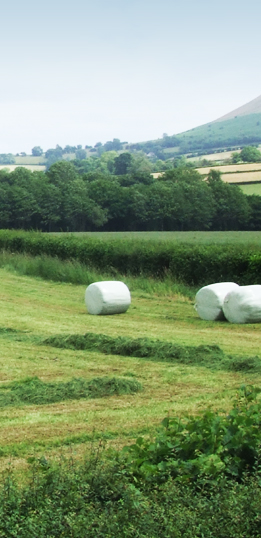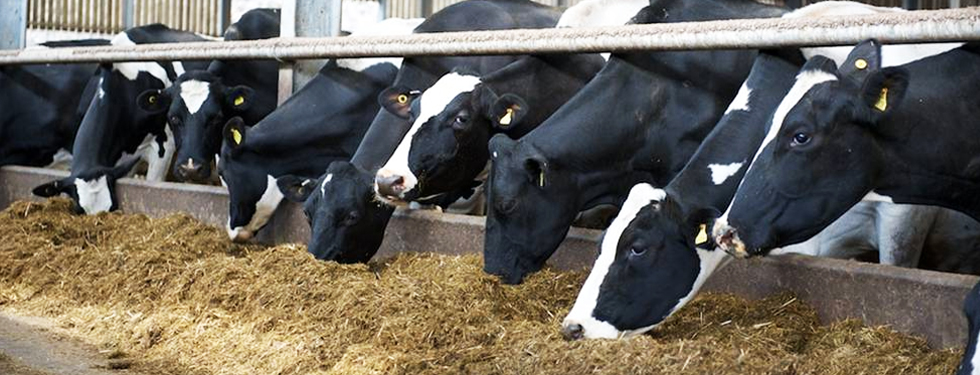
TendaHoof™ FX is designed to encourage the development of a beneficial rumen microflora and the maintenance of a stable rumen pH.
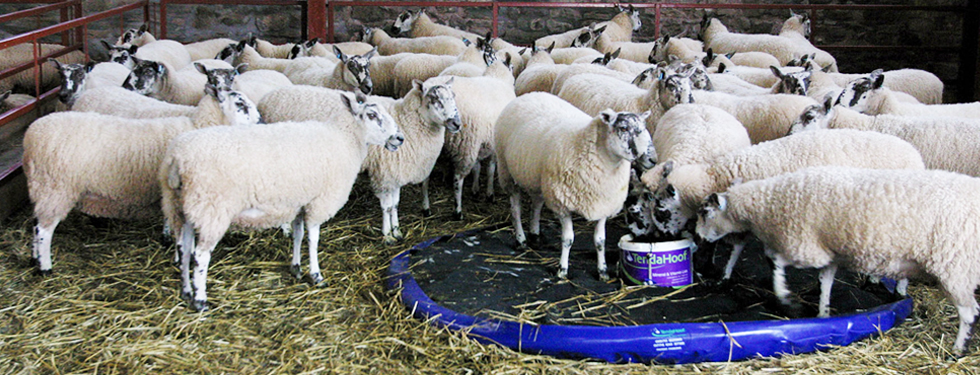
TendaHoof™ provides a simple 3-in-1 system which addresses both the nutritional and bacterial problems which cause lameness.
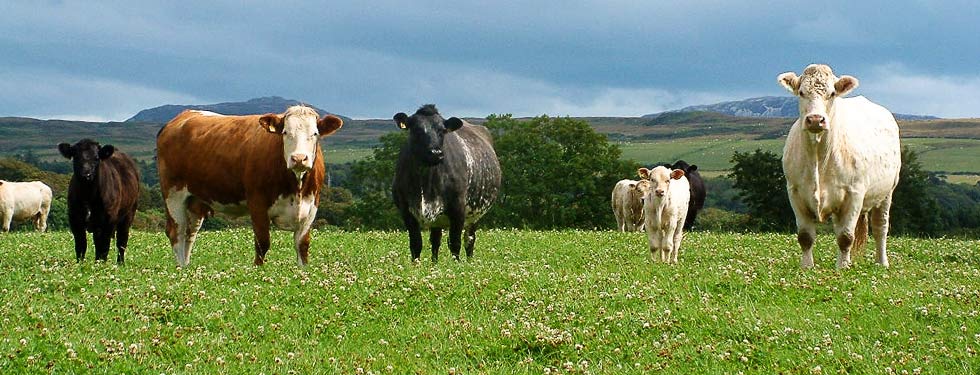
Select Nutrition provide specialist nutritional advice to improve animal performance.
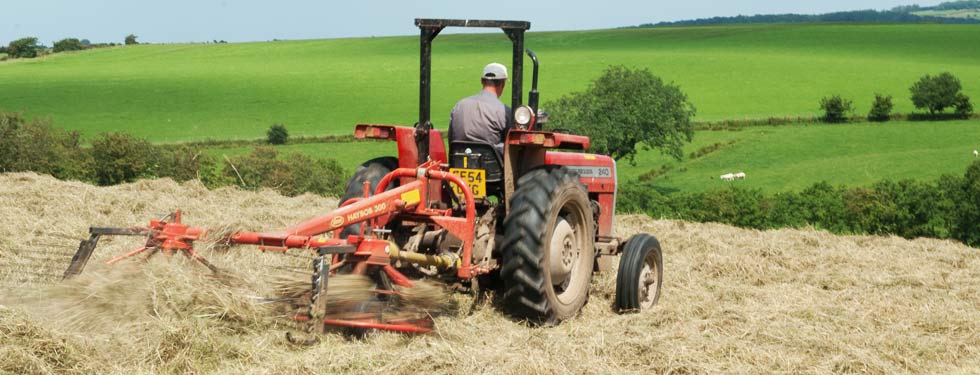
A well managed, correctly fertilised pasture may produce 10-11 tonnes of dry matter when grazed and 13-14 tonnes of dry matter when cut.
Forage/Seeds
Select Nutrition work closely together with Sinclair McGill to provide a positon of independence which enables us to take an objectiive view on varietal selection with animal performance at the heart of our selection process.
Well managed, correctly fertilised pasture containing productive grasses and clovers on average may produce 10-11 tonnes of dry matter when grazed and 13-14 tonnes of dry matter when cut for conserved forage.
Introducing some newer varieties can boost production from permanent pasture. Tired and under-performing swards limit the productive and financial returns that can be achieved off a farm's resources.
Reseeding
Grass Seeds
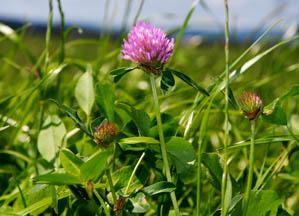
The Importance of grass and clover on livestock farms
The cost of production per litre of milk or kg of liveweight gain is a major consideration for all livestock producers. One of the best ways to reduce costs is to produce more fed on the farm rather than buying it in.
Advantages
- Very digestible high energy feed
- Large Bulk yields
- Highly palatable
- An on-farm source of protein
- Grazed grass can be the cheapest feed
- Flexible cropping options eg grazing or to produce a conserved feed.
Existing Pastures
The percentage of ryegrass (or other sown species) in a sward is a better indicator of a need for re-seeding than the age of the ley. Pulling up a handful of grass allows farmers to assess how much perennial ryegrass is therein by looking for any with a red base to their stem.
Weed grasses such as annual meadow grass take every opportunity to invade sown pastures with poor feed quality.
The ideal grass/clover dry matter across the grass sowing season is 70% grass to 30% white clover - but clover can vary widely within fields.
Re-seeding or over-seeding allows farmers to increase the performance of their swards by sowing improved grass and clover varieties that match individual field objectives.
Benefits of reseeding:
Why Reseed?
Well managed, correctly fertilised pasture containing productive grasses and clovers on average may produce 10-11 tonnes of dry matter when grazed and 13-14 tonnes of dry matter when cut for conserved forage.
Introducing some newer varieties can boost production from permanent pasture. Tired and underperforming swards limit the productive and financial returns that can be achieved off a farm’s resources.
- Increased Production
- Increased Feed Value
- Improved Animal Performance
- Improved Disease Resistance
- Improved Response to Nitrogen
- Improved Drought Resistance
Mixtures
In the UK farmers tend to reseed with a mixture of different grasses and clovers rather than sowing a single variety. Mixtures produce proven yield benefits compared to the same varieties sown individually to capitalise on the strengths of different varieties.
Perennial, Italian and Hybrid Grasses
Ryegrass is the most important sown grass due to its productivity and suitability to the climate.
Perennial ryegrass produces good yields of high quality forage:
- Establishes rapidly
- High yields in first harvest year
- High sugar content (good for silage making)
- produces dense and persistent swards useful for long term leys and establishing permanent leys
Italian ryegrass yields higher than perennial but has a poorer resistance
- Produces heavy crops of silage or hay
- Useful for short term ley (1-3 years)
- Long growing season, early grazing-leafy hay or silage cut)
Hybrid ryegrass is a cross between perennial and Italian varieties, combining the strengths of the two species.
- Better ground cover
- Longer lived
- Good winter hardiness
- Disease resistance
- Better mid season digestibility
- Yield improves with age
- Drought resistant
Timothy and Clover
Timothy
- Grows at lower temperatures so good for early season grazing
- Good mid season growth
- Good winter hardiness
- Good ground cover
- Slow to establish
- Good for extensive leys and hay production
White Clover
- High nutritional value (particularly protein and mineral content)
- High palatability
- Good animal performance
- Provide up to 150 kg of nitrogen per hectare
- Match leaf size to stock (small for continuous hard sheep grazing, medium for frequent cutting and rotational grazing, large for cutting and cattle grazing)
- Good for grazing and cutting
Red Clover
- High protein content
- High yields
- Low/no nitrogen inputs
- Early production of cuts (two main and a small autumn)
- Lasts for three years
- Good for cutting and finishing stock in autumn
High quality forage can be preserved with minimum protein breakdown and maximum nutrient retention through treatment with Pharmor.
Raymond Jones and his team at IGER showed, through protein fractionation work, that the amount of intact protein fell on average from about 90% in fresh grass to around 45% in grass ensiled without a biological additive.
However when a quality biological additive was used on the crop, fermentation was more rapid, there was much less breakdown of the protein and more usable intact protein was preserved in the silage - around 73%. Resulting in improved animal performance.
Proof at independant institutes show:
Liveweight gain increased by 86%
Milk Yield increased by 2.25 l per cow per day.
Roots & Forage Crops

Forage crops and roots have the potential to produce very high yields over a short growing season, combined with a flexible sowing window from early summer to the beginning of August.
Root and forage crops can be fed to all classes of livestock, either for milk production or for live weight gain and are suitable for organic and conventional farming.
Grass Silage
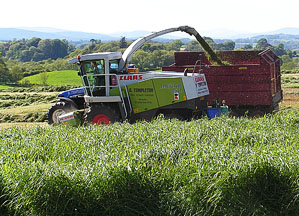
Producing high quality silage relies on encouraging a healthy population of beneficial bacteria, to multiply and use up oxygen in the clamp, transforming grass sugars into lactic acid - producing a rapid and stable fermentation.
Unfortunately there is often a significant population of bad bacteria which will disrupt the fermentation - raising the pH and thus reducing the palatability and nutrient level of the silage.
Pharmor
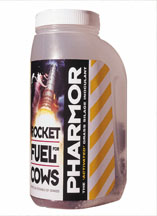
Pharmor Liquid has a range of bacteria and unique enzyme package with a specific bacterial growth medium, so that it hits the ground running, giving the fastest possible silage fermentation High quality forage can be preserved with minimum protein breakdown and maximum nutrient retention through treatment with Pharmor.
Trials have showed, through protein fractionation work, that the amount of intact protein fell on average from about 90% in fresh grass to around 45% in grass ensiled without a biological additive.
However when a quality biological additive was used on the crop, fermentation was more rapid, there was much less breakdown of the protein and more usable intact protein was preserved in the silage – around 73%. Resulting in improved animal performance.
Independent trials show the following results:
Liveweight gains increased by a staggering 86%
Milk yields increased by 2.25 litres/cow/day
Dry matter intake increased by over 6%
Dry Matter digestibility increased by over 6%
Total Protein retained increased by a massive 48%
Effluent reductions of 33%
Ensiling losses reduced by up to 54%
Trials have been carried out at Hillsborough and I.G.E.R. Aberystwyth.
Goldshake 50
Goldshake 50 is a combination of homofermentative lactic acid bacteria and enzymes. It is the most efficient treatment of normal grass silage which is not prone to heating. This will maximise animal performance by using the least amount of sugar to produce primarily lactic acid very quickly, around 2 days to ferment completely as opposed to 2-6 weeks for untreated silage. This importantly reduces the breakdown of true protein into ammonia by around 40%.
More energy, more true protein and less ammonia equals higher intakes and maximised animal performance.
Suitable crops
Any grass where heating is not an issue.
Goldshake Premium
The increase in the size and speed of silage making equipment has led to an increase in dry matter content. This in turn has led to an increase in heating and mould problems with air able to creep through the drier less well compacted material.
Goldshake Premium is a twin action product using both homofermentative bacteria (like Goldshake 50) and heterofermentative stabilising bacteria (like Goldshake Arable). This gives an efficient fermentation with the added benefit of improved aerobic stability. This is a good compromise where grass silage has a history of heating problems.
Suitable crops
Any grass where heating has been an issue.
Silostop
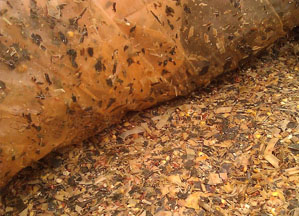
Silostop has been researched and developed over the last ten years. Silostop is the only oxygen barrier film on the market; other films restrict the flow of oxygen but do not stop it.
Silostop film is more than just polyethylene, the added raw materials gives it completely different characteristics to regular film. Not only does it exclude oxygen from the clamp but it is also stretchier and stronger.
Benefits:
- 100 Times more barrier than regular film.
- No top 1m spoilage.
- Clings to the contours of the silage.
- Strong enough to walk on.
- Easy to use.
Use Silostop film in conjunction with Silostop Protective Nets and Silostop Gravel Bags to creative an effective seal.
- Silostop Film - this is the key part of the system, creating a barrier to oxygen.
- Silostop Protective Nets - these are used to protect the film from physical damage and from sunlight. Regular bunker covers can be used as an alternative.
- Silostop Gravel bags - provide a good seal, are easy to handle, and eliminate the need for tyres.
Whole Crop
Goldshake Arable
Natural fermentation will waste energy and protein, resulting in silage prone to spoilage. Goldshake Arable is the ideal additive to protect and bring out the best in your wholecrop and maize silage.
Biological Preservative for High DM Silage
Wholecrop silage has become extremely adaptable with the introduction of forage harvesters with corn crackers. This allows a DM range for fermented cereal wholecrop of 30-75% DM. Maize silage is also high DM around 30% with high levels of sugar. Both these silages are stabilized with Goldshake Arable.
Features:
- One million bacteria per gram of forage
- Two stains of heterofermentative bacteria
- Easy to use, no growing up required
- Registered under EU 1831/2003
Benefits:
- Increases clamp stability by up to 5 days
- Reduces aerobic spoilage losses
- Increases palatability and intakes
- Reduces heat build up and fermentation losses
- Inhibits mycotoxin producing moulds
- Improves fermentation, energy and protein level
Each bottle of Goldshake Arable contains 250g and treats 50 tonnes of maize silage, dissolve in water and instantly make up to 100 litres.
Preservator
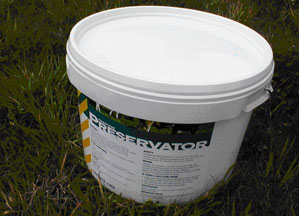
Preservator contains two silage stabilisers:
Stabiliser 1 – Ajoene
The active ingredients of preservator are chosen for their ability to control the aerobic stability in high dry matter and high starch crops (maize silage and whole crop silage).
Ajoene, a natural sulphur product, is 100 times more potent than prorionic acid (Prop corn) at inhibiting yeast and moulds. This product is totally harmless to lactic acid bacteria and suppresses yeasts and moulds in the early stages of ensiling.
Stabilser 2 – Sodium Benzoate
The preserving agent Benzoic Acid is released in acid conditions below pH 5 this suppresses the growth of yeasts and moulds and harmful bacteria as the fermentation of silage completes. The Benzoic Acid works right up until feedout of the silage.
Silostop

Silostop has been researched and developed over the last ten years. Silostop is the only oxygen barrier film on the market; other films restrict the flow of oxygen but do not stop it.
Silostop film is more than just polyethylene, the added raw materials gives it completely different characteristics to regular film. Not only does it exclude oxygen from the clamp but it is also stretchier and stronger.
Benefits:
- 100 Times more barrier than regular film.
- No top 1m spoilage.
- Clings to the contours of the silage.
- Strong enough to walk on.
- Easy to use.
Use Silostop film in conjunction with Silostop Protective Nets and Silostop Gravel Bags to creative an effective seal.
- Silostop Film - this is the key part of the system, creating a barrier to oxygen.
- Silostop Protective Nets - these are used to protect the film from physical damage and from sunlight. Regular bunker covers can be used as an alternative.
- Silostop Gravel bags - provide a good seal, are easy to handle, and eliminate the need for tyres.
Maize Silage

Forage maize is relatively easy to grow and being drought tolerant is a consistent provider of high yields with minimum input from the farmer. From a practical point of view, forage maize also spreads the silage making season – maize is ensiled in September or October, long after most grass silage making has finished.
As a crop, forage maize has further advantages on the farm. Its late drilling date in early May provides the farmer with an area onto which he can spread the accumulated manure of the winter without damage. However, forage maize is not completely without its difficulties being low in both protein and minerals and as a crop sometimes difficult to fit into the cropping rotation.
Maize produces palatable silage that livestock like but which also produces much less effluent than grass. For farmers near watercourses this significantly reduces the environmental risks of effluent pollution.
Maize harvested for silage is an important feed crop. The crop provides livestock producers with a high-yielding, relatively consistent source of forage and the animals with a highly digestible and palatable feed. Maize silage produces more energy per acre than any other crop. Maize silage serves as a high-energy forage for cattle. This is most important for high-producing herds and on farms experiencing problems with making or buying high quality hay crop forage. Maize silage, with its relatively high-energy content, is also well adapted for use in low-cost rations for fattening cattle. Maize silage can efficiently recycle plant nutrients, especially large amounts of N and K. The most adequate moment for harvest of maize during the vegetation is the so called wax ripening phase of the maize grain. The presence of a dark colored layer at the base of the maize grain is also an indicator for the appropriate time of harvest for silage production. Once the first grains with dark layer are noticed you should wait for 3-4 weeks more before harvesting.
At this time the average dry matter contents of the maize plant is 30-35%. After the indicated phase, the contents of dry matter decreases as the stems get broken and leafs fall off. The maize can be silaged with or without other components. The whole maize plant should be harvested by cutting it 10-12 cm from the ground.
Goldshake Arable
Natural fermentation will waste energy and protein, resulting in silage prone to spoilage. Goldshake Arable is the ideal additive to protect and bring out the best in your wholecrop and maize silage.
Biological Preservative for High DM Silage
Wholecrop silage has become extremely adaptable with the introduction of forage harvesters with corn crackers. This allows a DM range for fermented cereal wholecrop of 30-75% DM. Maize silage is also high DM around 30% with high levels of sugar. Both these silages are stabilized with Goldshake Arable.
Features:
- One million bacteria per gram of forage
- Two stains of heterofermentative bacteria
- Easy to use, no growing up required
- Registered under EU 1831/2003
Benefits:
- Increases clamp stability by up to 5 days
- Reduces aerobic spoilage losses
- Increases palatability and intakes
- Reduces heat build up and fermentation losses
- Inhibits mycotoxin producing moulds
- Improves fermentation, energy and protein level
Each bottle of Goldshake Arable contains 250g and treats 50 tonnes of maize silage, dissolve in water and instantly make up to 100 litres.
Preservator

Preservator contains two silage stabilisers:
Stabiliser 1 – Ajoene
The active ingredients of preservator are chosen for their ability to control the aerobic stability in high dry matter and high starch crops (maize silage and whole crop silage).
Ajoene, a natural sulphur product, is 100 times more potent than prorionic acid (Prop corn) at inhibiting yeast and moulds. This product is totally harmless to lactic acid bacteria and suppresses yeasts and moulds in the early stages of ensiling.
Stabilser 2 – Sodium Benzoate
The preserving agent Benzoic Acid is released in acid conditions below pH 5 this suppresses the growth of yeasts and moulds and harmful bacteria as the fermentation of silage completes. The Benzoic Acid works right up until feedout of the silage.
Silostop

Silostop has been researched and developed over the last ten years. Silostop is the only oxygen barrier film on the market; other films restrict the flow of oxygen but do not stop it.
Silostop film is more than just polyethylene, the added raw materials gives it completely different characteristics to regular film. Not only does it exclude oxygen from the clamp but it is also stretchier and stronger.
Benefits:
- 100 Times more barrier than regular film.
- No top 1m spoilage.
- Clings to the contours of the silage.
- Strong enough to walk on.
- Easy to use.
Use Silostop film in conjunction with Silostop Protective Nets and Silostop Gravel Bags to creative an effective seal.
- Silostop Film - this is the key part of the system, creating a barrier to oxygen.
- Silostop Protective Nets - these are used to protect the film from physical damage and from sunlight. Regular bunker covers can be used as an alternative.
- Silostop Gravel bags - provide a good seal, are easy to handle, and eliminate the need for tyres.
Testimonial
Getting the most production from grass is the focus of Welsh dairy farmer Alun Thomas, who is producing an average of 8,500 litres milk from a simple silage and home mix system at Upper Pendre farm in Llangorse.
"The addition of the yeast to the TendaHoof™ FX means good rumen health in our cows and better feed utilisation. The yeast is certainly something we will keep in our ration."
